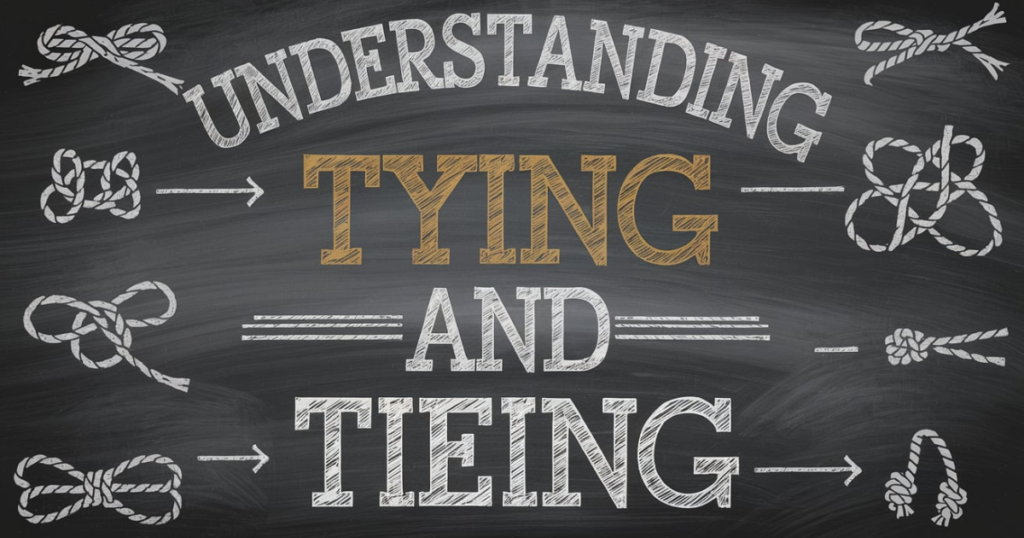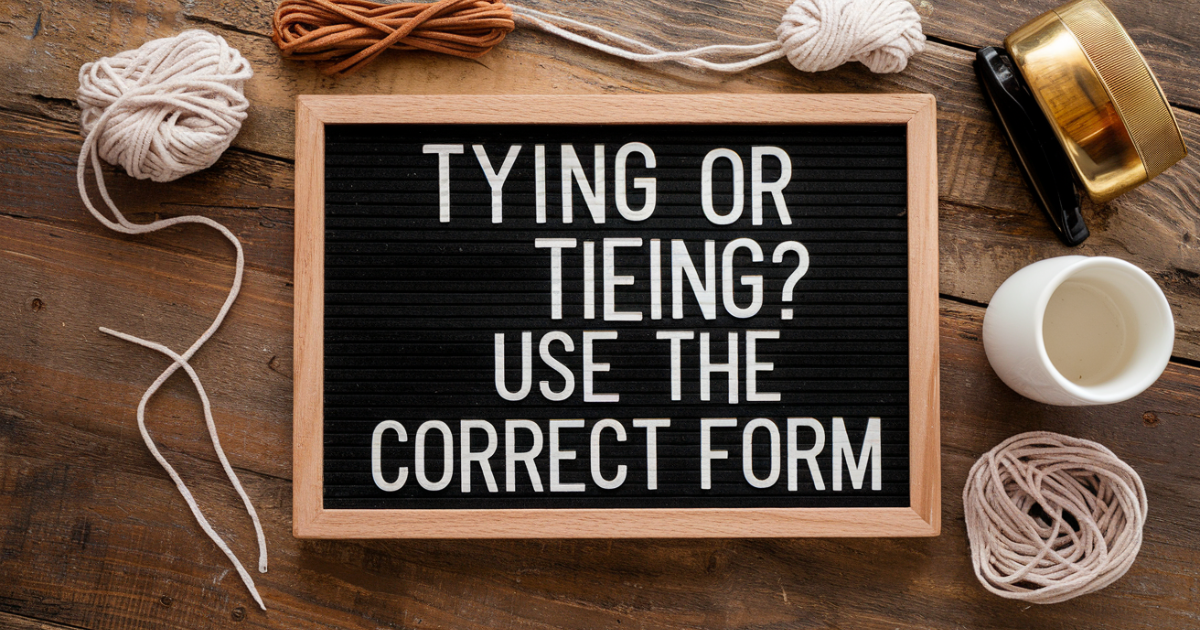When it comes to the words tying or tieing, many people find themselves uncertain about which form to use. The confusion often arises from the rules governing English spelling, particularly when it comes to adding suffixes. Understanding the correct usage of these terms is essential, especially since they convey different meanings in various contexts.
The word tying is the correct form and is the present participle of the verb tie, meaning to fasten or bind with a knot. In contrast, tieing is an incorrect spelling that doesn’t conform to standard English rules. By exploring the proper usage of tying, we can clarify how to use this term accurately in everyday writing and communication.
Understanding Tying and Tieing

Tying: Definition and Usage
Tying is the present participle of the verb tie, which means to fasten or secure something using a knot or similar method. It can refer to binding objects together or connecting concepts in various contexts. Understanding how to use tying correctly is essential for clear communication.
Examples:
- She is tying her shoelaces before the race starts.
- The chef is tying the herbs together with kitchen twine for the recipe.
You Also Like To Read This: Oversight Vs. Oversite: Understanding The Key Differences
Tieing: Definition and Usage
Tieing is an incorrect spelling of the word tying, which is the present participle of the verb tie. In standard English, tieing does not exist and should be avoided to maintain grammatical accuracy. While some might mistakenly use tieing in writing, it can lead to confusion and undermine professionalism.
It’s crucial to remember that the correct form is tying when referring to the act of fastening something. Always use tying to ensure clear and proper communication.
Correct : She is tying the ribbon around the gift to make it look beautiful.
Incorrect: He was tieing his shoes before going for a run.
Mastering the Correct Form: Is It Tying or Tieing?
When deciding between “tying” and “tieing,” the correct spelling is “tying”. This is the gerund or present participle form of the verb “tie,” meaning to fasten or secure. Adding “-ing” to most verbs is straightforward, but for words ending in “-ie,” like “tie,” replace the “-ie” with a “y” before adding “-ing.”
So, “tying” is correct in sentences like, “She is tying her shoes,” while “tieing” is incorrect. Remember this rule to keep your writing clear and accurate!
Side-by-Side Comparison
Here’s a side-by-side comparison of Tying and Tieing:
| Word | Correctness | Definition |
| Tying | Correct | The present participle of tie, meaning to fasten or bind something. |
| Tieing | Incorrect | A nonstandard spelling of tying that should be avoided in English. |
In summary, tying is the correct form used to describe the act of fastening something, while tieing is an error that does not conform to standard English conventions. Using the correct form ensures clarity and professionalism in writing.
Key Differences
- Spelling: The correct spelling is tying, while tieing is an incorrect variant that should be avoided.
- Usage: Tying is used as the present participle of the verb tie, indicating the action of fastening something.
- Standard English: Only tying is recognized in standard English; using tieing can lead to confusion and diminish the quality of your writing.
Everyday Usage Examples

- She is tying the strings of her apron before starting to cook.
- He spent the afternoon tying fishing lines to prepare for the weekend trip.
- The student is tying her hair back into a ponytail for gym class.
- They are tying the decorations to the balloons for the birthday party.
FAQs
Is it tying up or tieing up?
The correct phrase is tying up, which refers to the action of securing something. Tieing up is an incorrect spelling and should be avoided.
Is it tieing or tying the knot?
The correct term is tying the knot, which means getting married. Tieing the knot is a misspelling and not recognized in standard English.
What is the meaning of tieing?
Tieing is an incorrect spelling of tying and does not have a recognized meaning in English. The correct term refers to fastening or securing something with a knot.
What does tying in mean?
Tying in typically means to connect or relate something to another concept. It can also refer to incorporating information or elements into a larger context.
Conclusion
In conclusion, understanding the distinction between tying and the incorrect variant tieing is essential for effective communication. Tying is the correct present participle of the verb tie, meaning to fasten or secure something. On the other hand, tieing is a nonstandard spelling that should be avoided in both formal and informal writing.
Misusing tieing can lead to confusion and undermine the clarity of your message. To maintain professionalism in your writing, always opt for the correct form, tying. This attention to detail enhances readability and demonstrates a solid grasp of English language conventions.

Grammerlytips.com, authored by Jame, offers expert tips and insights on mastering grammar, enhancing writing skills, and boosting communication effectiveness.

